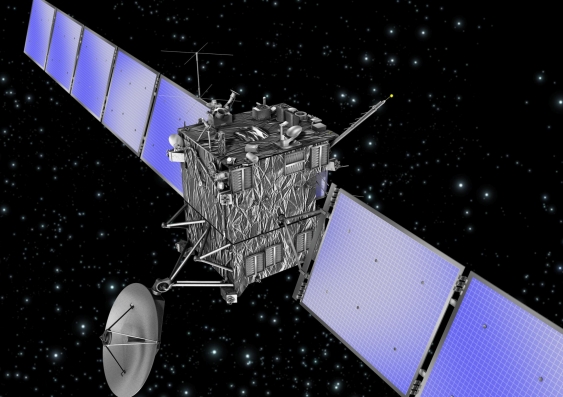The Rosetta spacecraft’s mission to land on the surface of a comet has captured the imagination of the world, and the anxious attention of one Australian engineer in particular.
Canberra-based UNSW space engineer Sean Tuttle will be up at 3am to watch a live webcast from the European Space Agency and admits to a case of nerves.
Dr Tuttle devised and oversaw the implementation of the spacecraft’s thermal design.
“Because of the extreme temperatures that it has encountered, both hot and cold, and the very low power available on-board to manage those temperatures, Rosetta has been the most challenging space mission ever undertaken by Europe,” Dr Tuttle explains.
Since it was launched in March 2004, the European Space Agency's Rosetta has travelled 6.5 billion kilometres to chase comet 67P/Churyumov-Gerasimenko and attempt a landing on its surface.
If successful, it will test samples from the comet’s surface for amino acids, which could show that comets were responsible for delivering to Earth the building blocks for life.
Dr Tuttle says he’s been following the live webcast all day and will continue to check in tonight, although so far “it’s been a lot of coverage of people not doing much”.
“The unknown makes it exciting and a bit nerve-racking. They’ve thought of just about everything they could. Now they just need a bit of luck,” Dr Tuttle says.
“The main issue is that they just don’t know what they’re landing on.”
“Because it’s so far away they can’t actually change anything now even if they wanted to. There’s a good half-hour delay between actual events and what we see so all the last sequences are automated.”
Dr Tuttle says he’s been receiving regular updates from the European space team, “which includes some insider information”, but he’ll be depending on the live webcast like the rest of the world.
Working in the European space sector on more than 20 space missions over 15 years, Dr Tuttle was responsible for developing novel ways and new technologies to manage the thermal issues inherent with the Rosetta comet mission.
“The challenge got even greater when the launch was delayed by a year and Rosetta had to target a different comet instead. We had to develop and implement modifications to the design of the spacecraft at the launch site in South America,” he said.
Dr Tuttle returned to Australia in 2012 and now plays a central role in UNSW’s push to develop routine, affordable in-orbit space research capability.
“Our goal is to use networked collections of tiny, low-cost satellites, which will contribute to Australia’s need for safe and secure access to the space-based technologies we rely on for economic, social and strategic benefit,” said UNSW Canberra’s Chair for Space Engineering, Professor Russell Boyce.
“Space for Australia is not about launching large rockets and satellites from Cape York or Christmas Island. Space for Australia is about participation in high-end innovation, leveraging new technologies and opportunities that make sense for the country.
“The Asia-Pacific region will be the space hot-spot in the years and decades to come: the Australian space sector is gathering momentum, and the opportunities in front of us for taking advantage of this are many,” Professor Boyce said.
Dr Tuttle agrees: “Other countries worked out years ago it was a necessary industry. We just need to get our act together.
“Australia has a lot of catching up to do. The sooner we do that the better."
Media contact: Steve Offner, UNSW Media, 02 9385 15 83 or 0424 580 208


